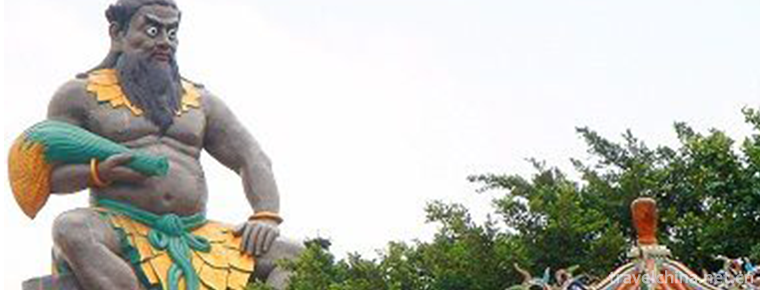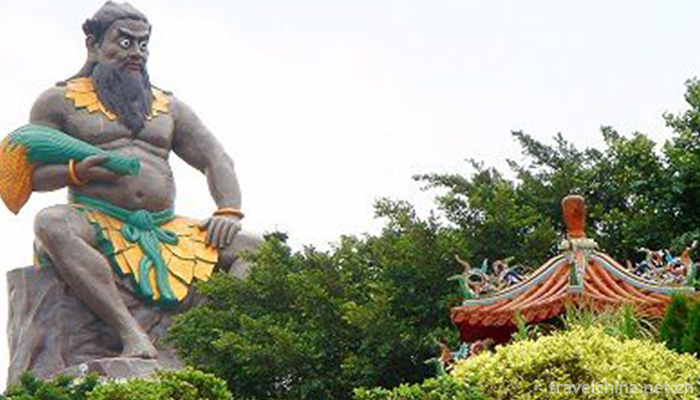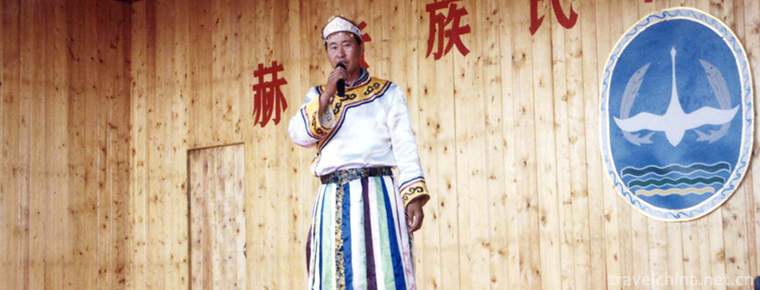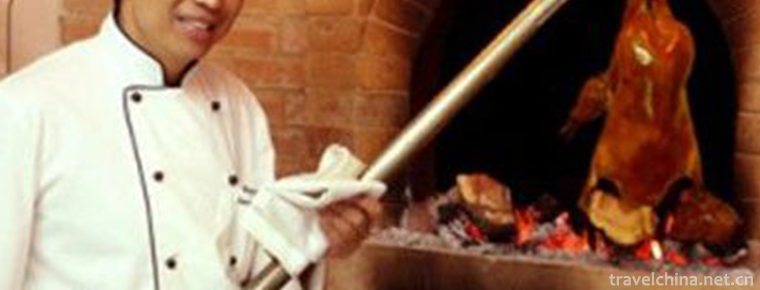2019-05-03

- By ChinaWiki.net
- Chinese Edition
- 2019-07-10
Legend of Emperor Yan Shennong
Yan Emperor Shennong, one of the three emperors and five emperors, is one of the local folklores in Suizhou, Hubei Province, and is the national intangible cultural heritage. After Wa Fuxi, a stepdaughter, a sun god, Emperor Yan, appeared several decades later. He runs 12,000 miles south together with the beast-faced God of fire Zhurong, the emperor of the south.
In 2008, it was selected as the second batch of national intangible cultural heritage list.
Historical Origin
The Sun God Yan Di was a very kind god. When he appeared in the world, human beings on the earth had produced a lot, and the food produced by nature was not enough to eat. The loving Yan Di taught people how to sow grain and exchange labor for resources of life. At that time, human beings worked together, helped each other, had no slaves, had no masters, and the fruits were shared equally, and their feelings were as kind as brothers and sisters. Emperor Yan also told the sun to send out enough light and heat to make grain grow. From then on, mankind will not worry about food and clothing. We all remember his merits and called him "Shennong". Legend has it that he is a tauren. That's probably because in the agricultural age, cows that have helped us farm for thousands of years have made a special contribution.
When Emperor Yan, the sun god and agricultural god, was born, he did not need any manpower at all. Nine wells emerged naturally. The water in these nine wells is connected with each other. If one of them is taken out, the water in the other eight wells will fluctuate.
According to legend, Emperor Yan Shennong was a sage emperor among the three emperors and five emperors in ancient times, and was the incarnation of the Chinese nation. Many historical books in China, such as Zuo Zhuan, Li Ji, Han Shu, Jingzhou Ji, Emperor's Century, Shui Jing Zhu, Kuo Ge Zhi, Han and Tang Geographical Book Notes, Road History and Daqing Unified Records, all consider that the birthplace of Yan Emperor Shennong is Lishan, Lishan or Lishan, which is accompanied by today's Hubei Province. Lishan Town, City. According to the records of Suizhou Chronicle written by Tongzhi in the Qing Dynasty, "Shennong Temple, Shennongjing Temple and Yandi Temple were built in the mountains." According to legend, Shennong was born in Shennong Cave on the fifth hilltop and half hillside of Nanjiulishan Mountain in Lishan Town. Near Shennong Cave, there is an ancient temple with statues of Fuxi, Shennong and Xuanyuan. Lishan Town in Suizhou City is only 200 kilometers away from Shennongjia Forest District. The former is the hometown of Shennong, while the latter is the place where Shennong lived for a long time. So far, the folk customs, dialects and legends about Shennong clan in the two places are almost similar. Both places are the birthplaces of Yanhuang culture. According to Sima Zheng's Three Emperors'Benji, "Shennong's family name, Jiang's surname is King Huode. Mother said that Nu Deng, Nu Wa's daughter, Ren Shenlong was born, longer than Jiangshui, named Lishan, also known as Lishan. According to "Mencius Liang Hui Wang Zhang Sentences," it says: "Shennong, the daughter of Wa, Anden, was born emperor for Xiaodian imperial concubines and Yi Shenlong. Chengxi's foundation (Fuxi's Zen position and Shennong's) is King of Fire. So he said, "Emperor Yan". It is called "Shennong" because it is used for raking, rubbing water for raking, and for raking to teach the world. According to Simazhen's "Three Emperors'Benji", it reads: "Taihao Fuxi's family, the sun and moon are as bright as Qiming's, Longhe Ma Tushen should be, the secrets of Yin and Yang should be discharged, and the Austrian Eight Diagrams should be matched with trunk branches to make Jiazi. It is like the beginning of a big marriage with a good family name, knotting ropes (referring to the knotting of ropes by Sui Ren's family, and the succession of generations, Sui Ren's four generations without hunger, Ge Tian, Nuwa to Fuxi, inheriting the basic undertakings), stressing human relations for etiquette, and serving as the 25 Sui's Sergeant and the Disciplinary Officer of Longshi. First cook, advocate six beasts, the first emperor. The end arches on the top, while Zhu Xiang's ministers divide up on the bottom. Whoa, that's why Kaiyan Emperor is so prosperous on this day." Because it was the nineteenth age of Chan Tongji period, Fuxi Chan was located in Zhuxiang, the first minister of Chan, that is, Emperor Yan. So there is the theory that "this day is the prosperity of Kaiyan Emperor". To sum up, Emperor Yan is Zhuxiang's, and Emperor Zhu Bao is Yan's. He is a person. According to Ciyuan II, "Zhu Xiangshi, the alias of Emperor Yan, is fully recognized". "Ciyuan" also explains: "Lu's Spring and Autumn Gule" cloud: "In the past, Zhu Xiangshi ruled the world, windy and Yang accumulated." The meaning of this sentence also shows that Zhu Xiangshi was subjected to Fuxi's Zen position and had a world under heaven, so it is recorded that "Zhu Xiangshi ruled the world as well." The Warring States Policy records that Shennong's attack and supplement was the earliest war in China.
primary coverage
The traditional folk legends about Shennongjia in Shennongjia area of Hubei Province are very rich and colorful. Emperor Yan Shennong's deeds of erecting a framework to collect medicines, punishing evil and promoting good, and making profits for the people are well known to all here. The book Shennongjia Folk Tales Collection published in 1990 contains dozens of legendary stories related to Shennongjia. These legends show that Shennong had traveled all over Shennongjia's mountains and rivers: he built wooden nests for the common people to live in; he built a frame to collect medicine and compiled medicinal books to cure diseases for the people; he fought against beasts and punished evil people, and promoted human integrity; he taught people to harvest rice, raise silkworms, textile, plant trees, collect tea, make pottery, make end harrows, and raise livestock and poultry. Creating market trade, making piano and music, creating music and dancing, and enjoying the people together, the peaceful prosperity emerged.
One of the legends
Once, Shennong poisoned himself while picking herbs and tasting herbs. His life was in danger. He plucked several leaves from the bushes beside him and chewed them down to relieve his hunger and thirst. Miracles appeared, and these leaves saved Shennong's life. Therefore, Shennong named the leaves "tea" and advocated tea planting and drinking.
Modern science has proved that tea tannins and other substances in tea can indeed resist bacteria, sterilize, eliminate inflammation and detoxify, and have anti-cancer function.
Legend II
When Shennong was collecting medicine in Shennongjia, he climbed Yanziya and Tianmen Yao, which are known as fairyland, and then climbed Huishengzhai, in order to record 72 kinds of Yang-restoring drugs in his Zizhu bamboo slips, Shennong Herbal Classic. According to legend, the medicine of reviving Yang in Shengzhai came back to life after death, so it was called "Huishengzhai". When Shennong's family crossed a single wooden bridge in Huishengzhai, he accidentally lost the bamboo slips of Shennong Materia Medica under the bridge, which was named "Lost Book Bridge". Shennong was in a pity and embarrassment when suddenly a group of white cranes flew from the blue sky and took him to heaven, becoming a "medicine fairy". Huishengzhai was renamed "Liuxiangzhai" because of its perfume throughout the year.
Modern Evidence
In the autumn of 1985, the author accompanied the cultural relics workers to Tianmen Yard and Liuxiang Village for investigation. Two kilometers below Liuxiang Village, a Qing Dynasty stone sculpture of Shennong riding a crane to heaven was found. It is amazing that the stone sculpture coincides with the local folklore.
Some local chronicles of historical records describe the shape of Emperor Yan Shennong: 8 feet 7 inches long, loud voice, wide forehead, round and prominent eyebrows, many beards, a large nose, thick lips. These features are exactly the same as this stone carving of the Shennong family riding a crane.

Ask a Question
Your email address will not be published.



0 Questions